Cortado is a popular coffee beverage that has been enjoyed in many Spanish-speaking countries for decades. It is a simple, yet sophisticated drink that is made with equal parts of espresso and steamed milk, with no froth on the top. The result is an espresso coffee drink with a smooth, creamy texture that is perfect for anyone who wants to enjoy a delicious coffee drink without the intensity of a straight espresso shot.

Table of Contents
ToggleKey Takeaways
- Cortado is a coffee drink made with equal parts of espresso and steamed milk, with no froth on the top.
- It originated in Spain and has become popular in many other parts of the world.
Ingredients and Preparation
Here are the ingredients and preparation steps you need to follow to make the perfect cortado.
The Espresso Component
The most crucial ingredient in a cortado is the espresso. You need to use freshly roasted coffee beans and grind them to a fine consistency. The ideal grind size is similar to that of table salt. You will need one or two shots of espresso, depending on your preference.
The Milk Factor
The milk used in a cortado is usually whole milk, but you can use any milk of your choice. To achieve the perfect texture and flavor, you need to steam the milk until it is heated and has a slightly foamy texture. The ideal temperature for steamed milk is between 140°F and 150°F.
Alternative Milk Options
If you prefer non-dairy milk, you can use almond, soy, or oat milk as a substitute. However, keep in mind that different types of milk may affect the flavor and texture of milk foam of your cortado coffee.
Sweeteners and Flavorings
Cortado coffee is usually served without any sweeteners or flavorings. However, if you prefer a sweeter or stronger taste anyway, you can add a small amount of sugar or syrup to your drink.
Please follow these steps:
- Grind your coffee beans to a fine consistency.
- Place the coffee grounds in the portafilter and tamp them down firmly.
- Extract one or two shots of espresso, depending on your preference.
- Steam the milk until it is heated and has a slightly foamy texture.
- Pour the steamed milk over the espresso gently, keeping it layered.
The serving size for a cortado is a small glass typically between 4-5 ounces. Enjoy your delicious cortado coffee!
Brewing Techniques
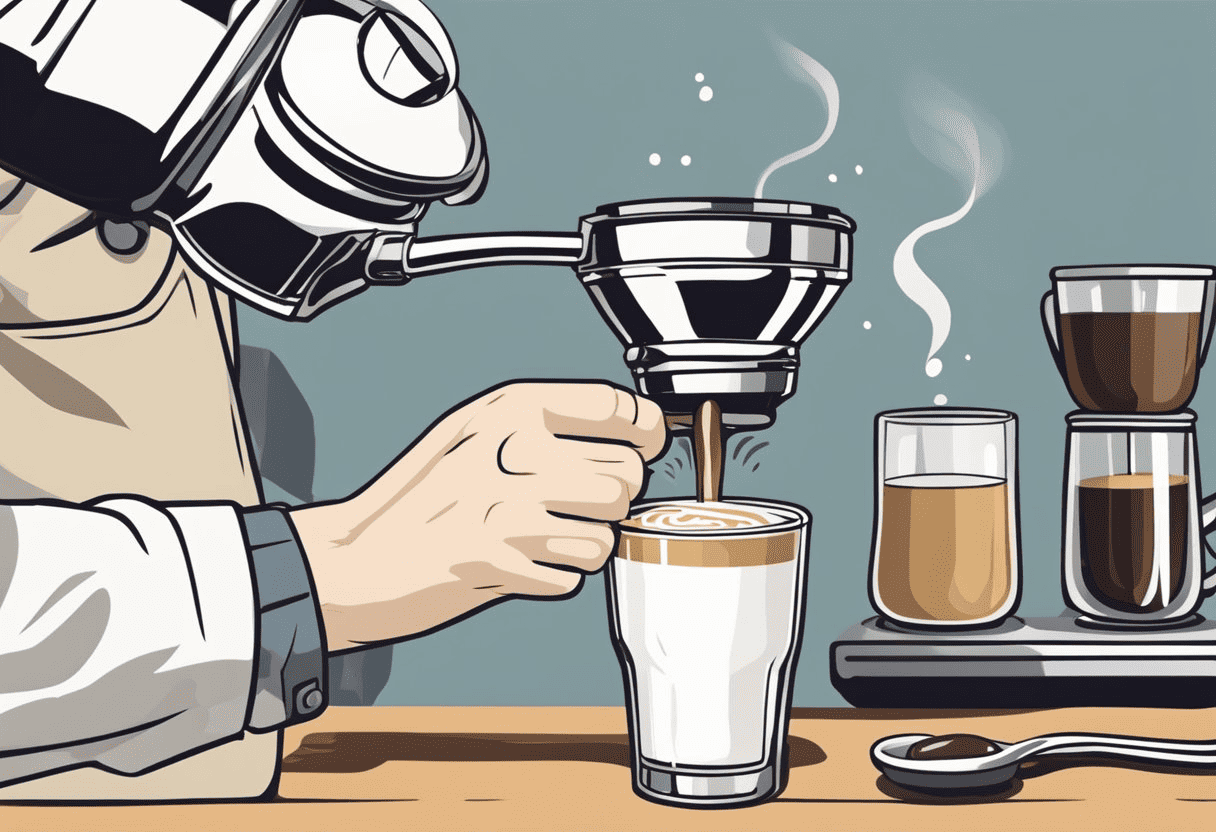
Using an Espresso Machine
To brew a perfect cortado, you need an espresso machine. First, grind your coffee beans to a fine consistency. Then, tamp the coffee grounds into the portafilter and attach it to the machine. Turn on the machine and wait for it to heat up. Once it’s ready, run a shot of espresso into a Gibraltar glass. Next, steam your milk to a velvety texture and pour it over the espresso shot. The ideal ratio of espresso to milk is 1:1.
Alternative Brewing Methods
If you don’t have an espresso machine, you can still make it using alternative brewing methods. One option is to use a Moka pot. Fill the bottom chamber with water and add finely ground coffee to the filter basket. Assemble the pot and place it on the stove over medium heat. Once the coffee starts to brew, remove it from the heat and pour it into a Gibraltar glass. Then, steam your milk and pour it over the coffee.
Another option is to use an Aeropress, a French press or a Nespresso. Brew a strong shot of coffee using either of these methods and pour it into a Gibraltar glass. Steam your milk and pour it over the coffee.
Serving and Presentation
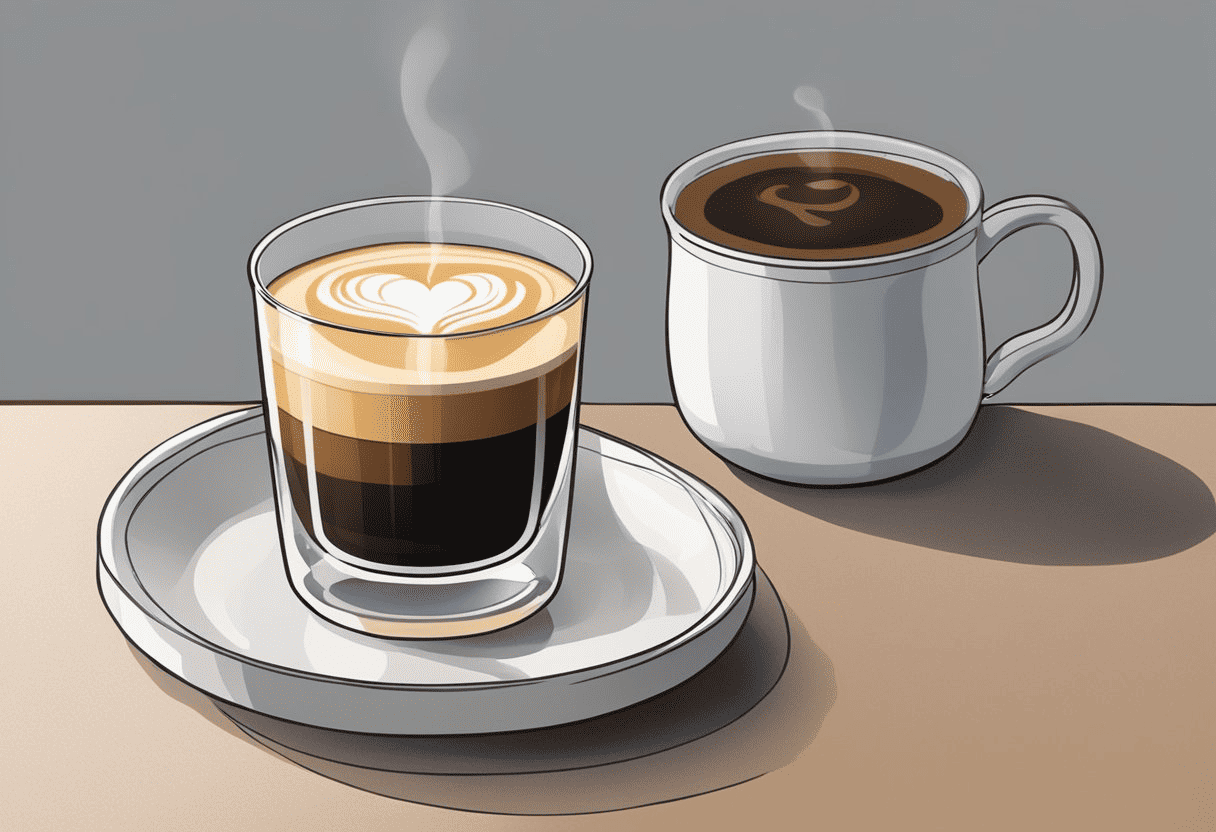
The traditional glassware used by coffee enthusiasts for serving a cortado is a small, 4-5 oz glass known as a Gibraltar glass. This glass is named after the Gibraltar cocktail glass, which it closely resembles. The Gibraltar glass is a popular choice among coffee shops for its durability and aesthetic appeal. It is also known for its ability to maintain the temperature of the drink, keeping it warm for longer.
Health and Nutrition
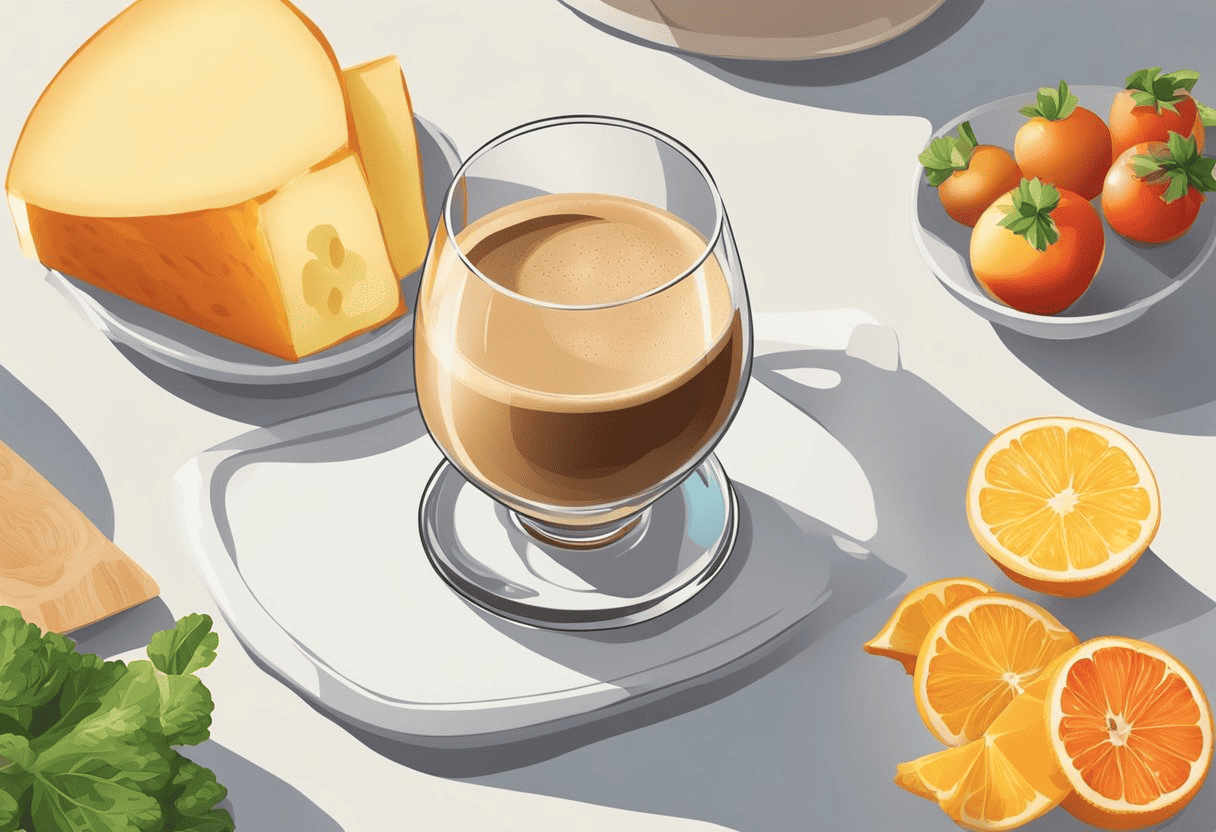
Caloric Content
If you’re watching your calorie intake, you’ll be happy to know that a cortado is a relatively low-calorie coffee drink. Traditional cortado coffee contains only one or two shots of espresso and a small amount of steamed milk, resulting in an average of 40-70 calories per serving. However, if you opt for a larger size or add sugar or sweetened condensed milk, the calorie count will increase significantly.
Caffeine
If the cortado is made with two espresso shots, it contains twice the amount of caffeine compared to a regular espresso. Otherwise, if it has one dose of espresso, it has the same strength as a regular espresso drink.
When it comes to caffeine content, it’s important to note that the type of coffee beans used to make the espresso will also affect the caffeine content of your cortado. If you’re sensitive to caffeine, consider choosing a decaf espresso.
Taste Profile

If you’re looking for a coffee that has a bold, yet balanced flavor, then this might be the perfect choice for you. This espresso-based drink has a unique taste profile that combines the rich flavor of espresso with the sweetness of steamed milk.
Acidity and Bitterness
Cortados are known for their low acidity and bitterness, which makes them a great option for those who find other espresso-based drinks too strong. Its acidity is generally mellow, which means that it won’t leave a sour taste in your mouth.
Home Brewing Tips
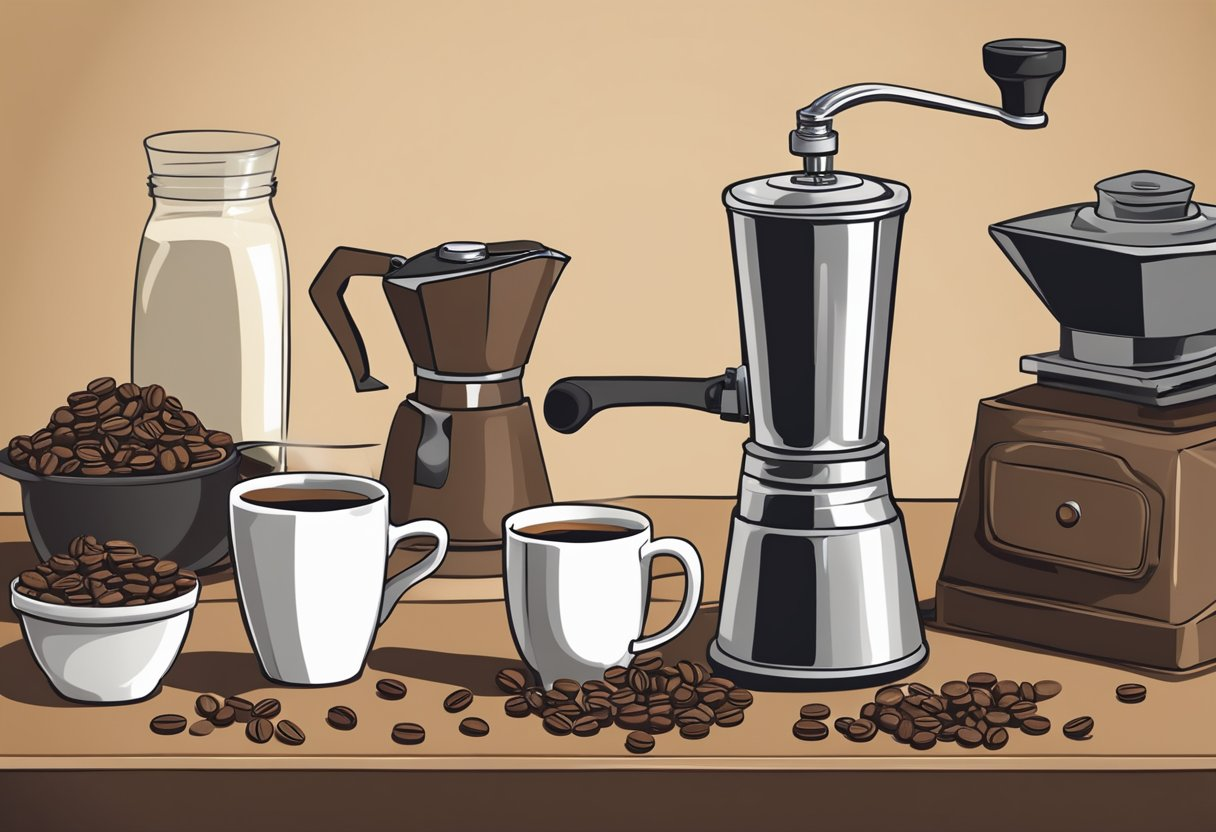
Selecting the Right Beans
When it comes to brewing a perfect cortado at home, selecting the right beans is crucial. You should opt for medium to dark roasted beans with a bold and rich flavor profile. Look for beans that are specifically labeled as espresso beans, as these are ideal for making this drink. If you’re grinding coffee beans at home, make sure to use a burr grinder to ensure a consistent grind size.
Milk Steaming Techniques
Steaming milk is a crucial step in making a cortado. To achieve the perfect micro foam, start by using cold milk and a clean steam wand. Position the steam wand so that it is just below the surface of the milk, and turn on the steam. As the milk heats up, lower the steam wand to create a whirlpool effect. Keep steaming until the milk reaches a temperature of around 60-70°C. Once steamed, gently tap the milk jug on the counter to remove any large bubbles. Pour the steamed milk into the espresso shot, slowly and steadily, to create the signature layered effect of a cortado.
History and Origin

The name “cortado” means “cut” in Spanish, which refers to the way the espresso is “cut” with a small amount of warm milk to reduce its acidity.
Spanish Roots
The cortado has its roots in Spain, particularly in the northern regions such as Basque and Catalonia. It is said to have originated in the early 20th century, where it was known as “Café con Leche Pequeño” or “small coffee with milk.”
In Cuba (and particularly, southeastern Florida in the United States), a similar drink called cortadito is popular. It is made by adding a small amount of sweetened condensed milk to the espresso. The cortadito is a staple in Cuban coffee culture and is often served with a small pastry.
In the United States, this type of drink gained popularity in the early 2000s, particularly in San Francisco, California, where roasters such as Blue Bottle Coffee Company and Ritual Coffee Roasters started the trend by serving the drink in special glassware by the same name.
Global Variations
Today, the cortado is enjoyed around the world, with variations in different countries. In Portugal, for example, a similar drink called pingado is popular, which is made by adding a small amount of milk to the espresso. Also, Portugal has another variation known as the galão, which is made with one part espresso and three parts steamed milk.
In Australia, the cortado has a variation known as a piccolo latte, and it is made with a double shot of espresso and a smaller cup of steamed milk.
Modern Twists on the Classic Cortado
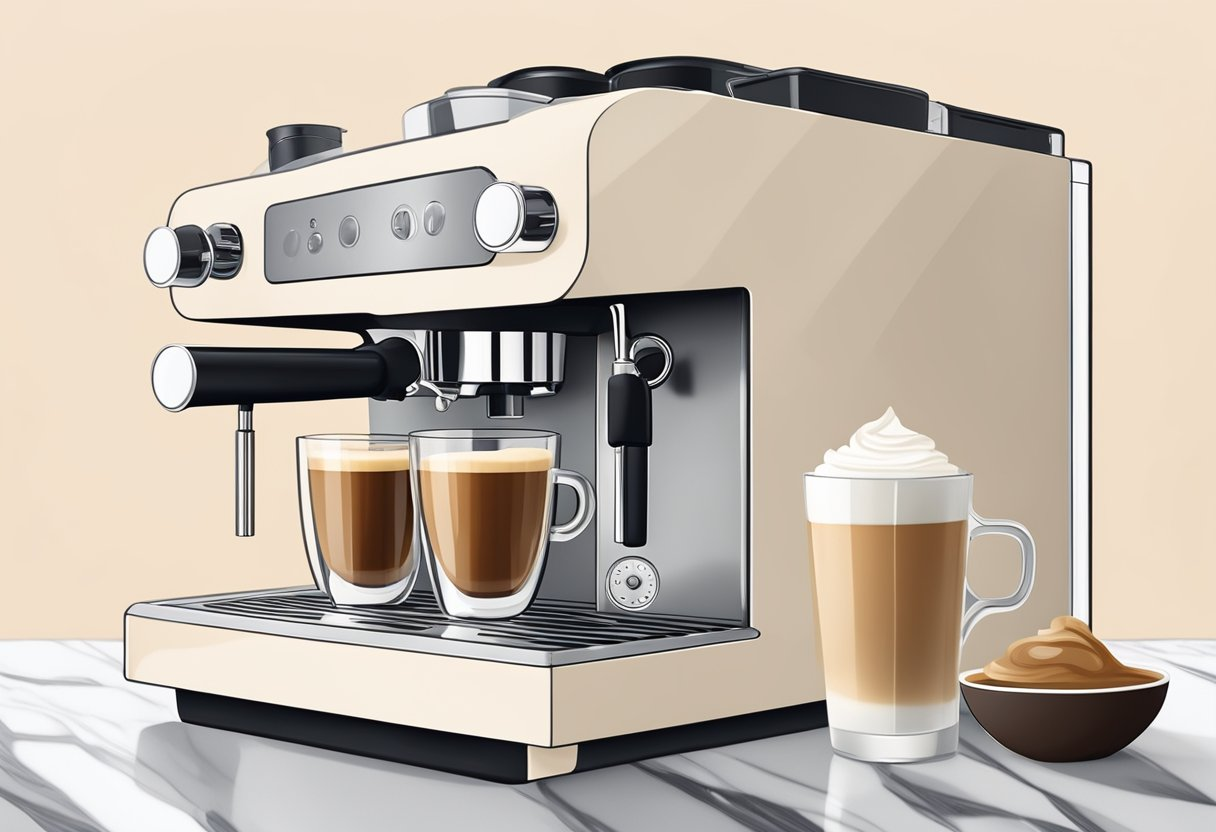
Did you know that modern coffee shops are putting their own twists on this classic drink? One popular variation is the iced cortado, which is made with espresso and cold milk. This refreshing drink is perfect for warm weather and provides a nice pick-me-up during a long day. Another twist is the use of milk alternatives, such as almond or oat milk, for those who are lactose intolerant or vegan.
Cortado vs Other Coffee Drinks
How does a cortado compare to other popular espresso drinks? Let’s take a closer look.
Cortado vs Flat White
A flat white is a popular coffee drink made with espresso and steamed milk. While a cortado also contains espresso and milk, the ratio of milk to espresso is different. A cortado typically has equal parts espresso and steamed milk, while a flat white has more milk and less espresso. This makes a cortado stronger and more intense than a flat white.
Cortado vs Macchiato
A macchiato is another popular espresso drink that is often compared to a cortado. However, there are some key differences. A macchiato is typically a shot of espresso with a small amount of steamed milk added on top. A cortado, on the other hand, has equal parts espresso and steamed milk. This means that a cortado is creamier and less intense than a macchiato.
Cortado vs Latte
A latte is a coffee drink made with espresso and steamed milk. A cortado also contains espresso and milk, and the ratio of milk to espresso is one to one. A latte typically has more milk and less espresso than a cortado. Therefore, a latte is creamier and contains less caffeine than a cortado.
Cortado vs Cappuccino
A cappuccino is a coffee drink made with espresso, steamed milk, and foam. While a cortado also contains espresso and milk in a one to one ratio. A cappuccino typically has more foam and less milk than a cortado. As a result, a cappuccino is lighter and less creamy than a cortado.
Wrap Up
The cortado is a popular coffee drink that originated in Spain and has become increasingly popular worldwide. It’s made by brewing a shot of espresso (or two) and then adding an equal amount of steamed milk. Next time you go to a coffee shop, make sure to try the cortado!
FAQ
What’s the proper way to make a cortado at home?
To make a cortado at home, you will need a shot of espresso and an equal amount of steamed milk. Start by brewing a shot of espresso and steaming the milk until it is silky and smooth. Then, pour the steamed milk over the espresso shot in a 1:1 ratio. The result should be a smooth and balanced coffee drink that is perfect for sipping.
What is the typical milk to coffee ratio used in a cortado?
The typical milk to coffee ratio used in a cortado is 1:1. This means that the amount of steamed milk used should be equal to the same amount of espresso in the drink. This ratio ensures that the coffee and milk flavors are balanced and that the drink is not too strong or too weak.
Is there a sweetness to a cortado or is it typically served unsweetened?
A cortado is typically served unsweetened, but you can add sweetness to your drink if you like. Some people prefer to add a little bit of syrup or honey to their cortado to give it a touch of sweetness. However, the drink is traditionally served without any added sugar.
What’s the difference between a cortado and a flat white?
The main difference between a cortado and a flat white is the milk to coffee ratio. A cortado is made with equal parts espresso and steamed milk, while a flat white is made with more milk than espresso. This means that it is stronger and has a bolder coffee flavor than a flat white.
Can you explain the difference in strength between a cortado and a macchiato?
A cortado and a macchiato are both espresso-based drinks, but they differ in strength. A cortado is made with equal parts espresso and steamed milk, while a macchiato is made with a shot of espresso and just a small amount of steamed milk. Therefore, it is milder and less intense than a macchiato.
